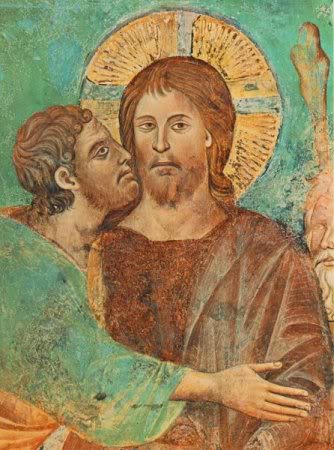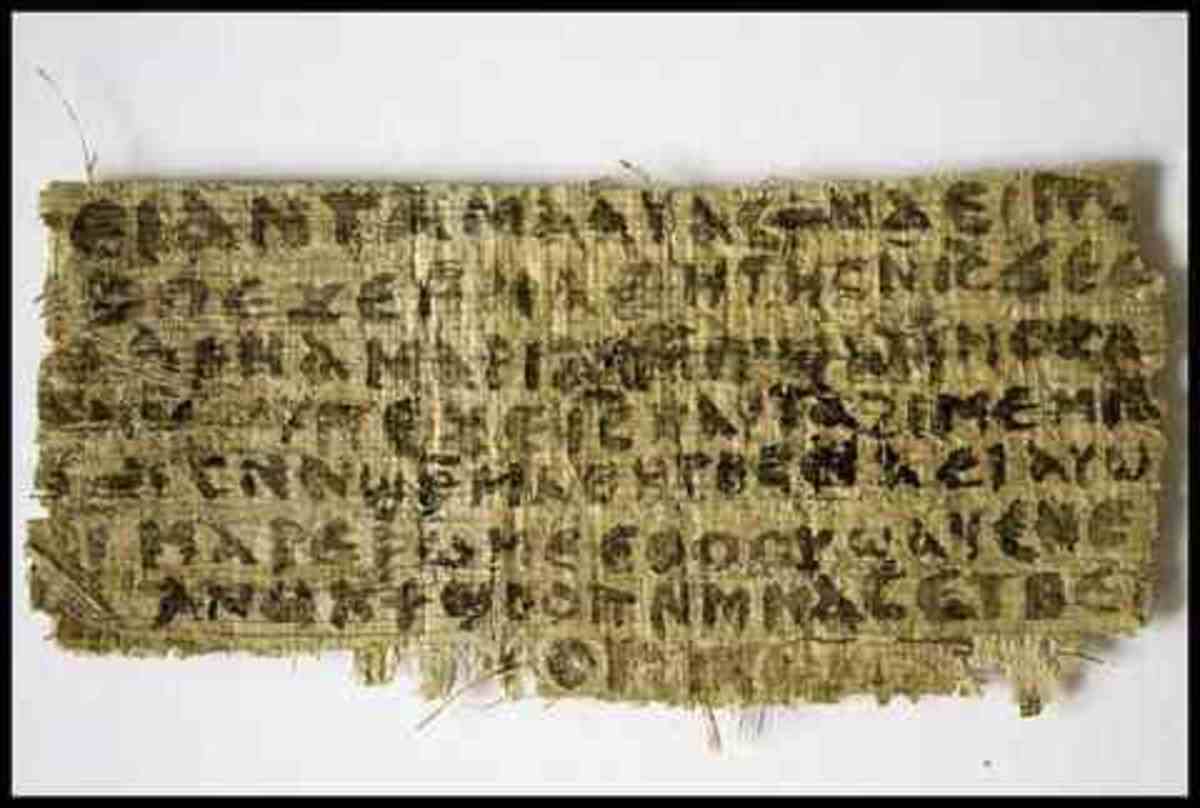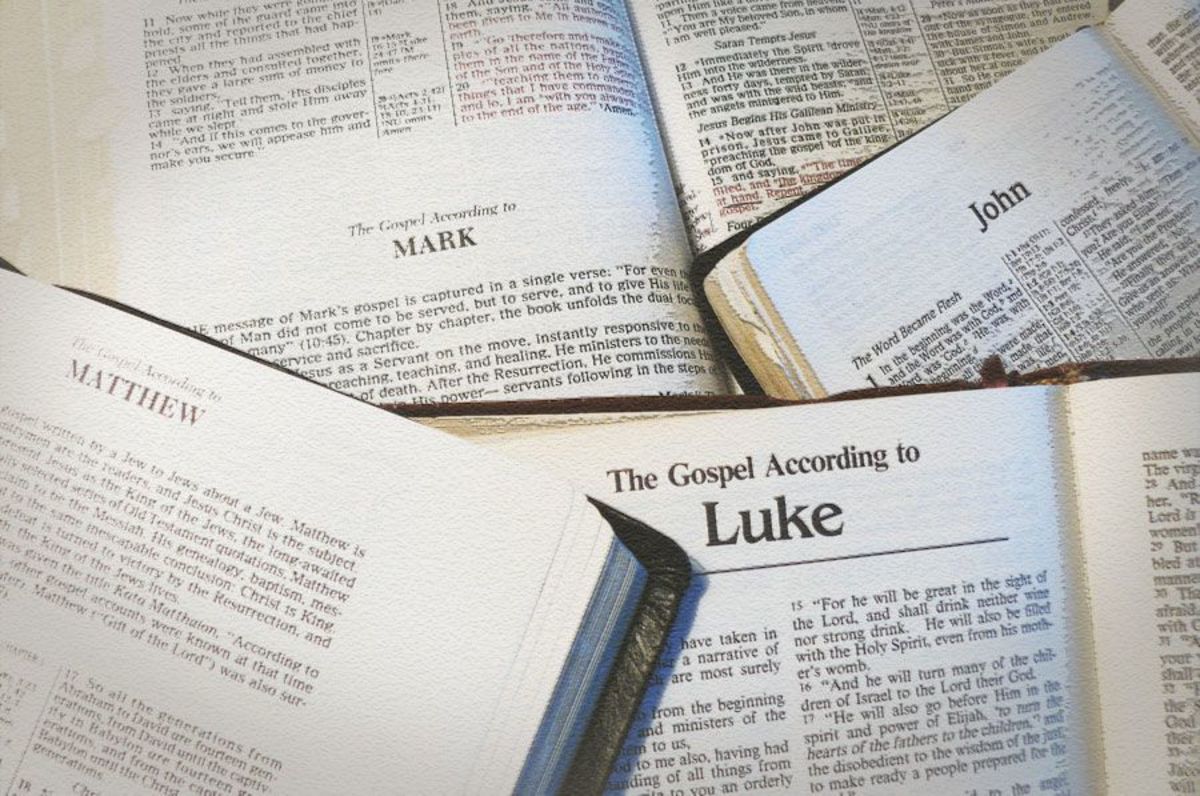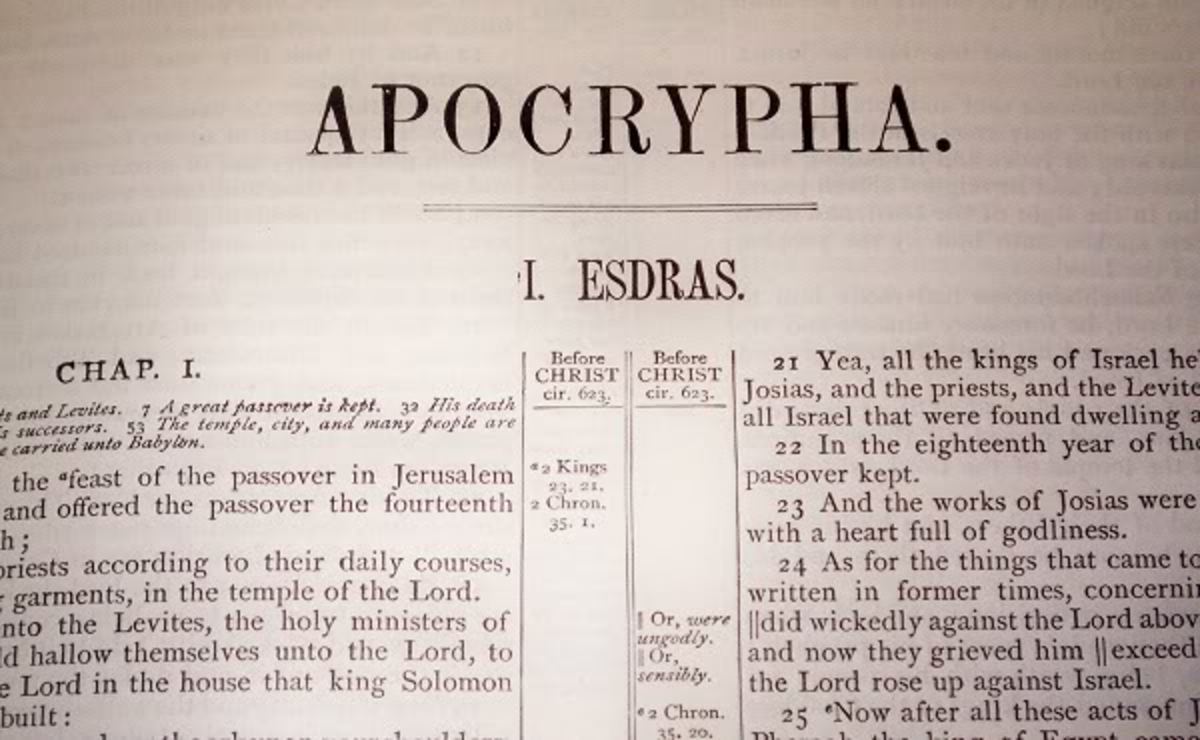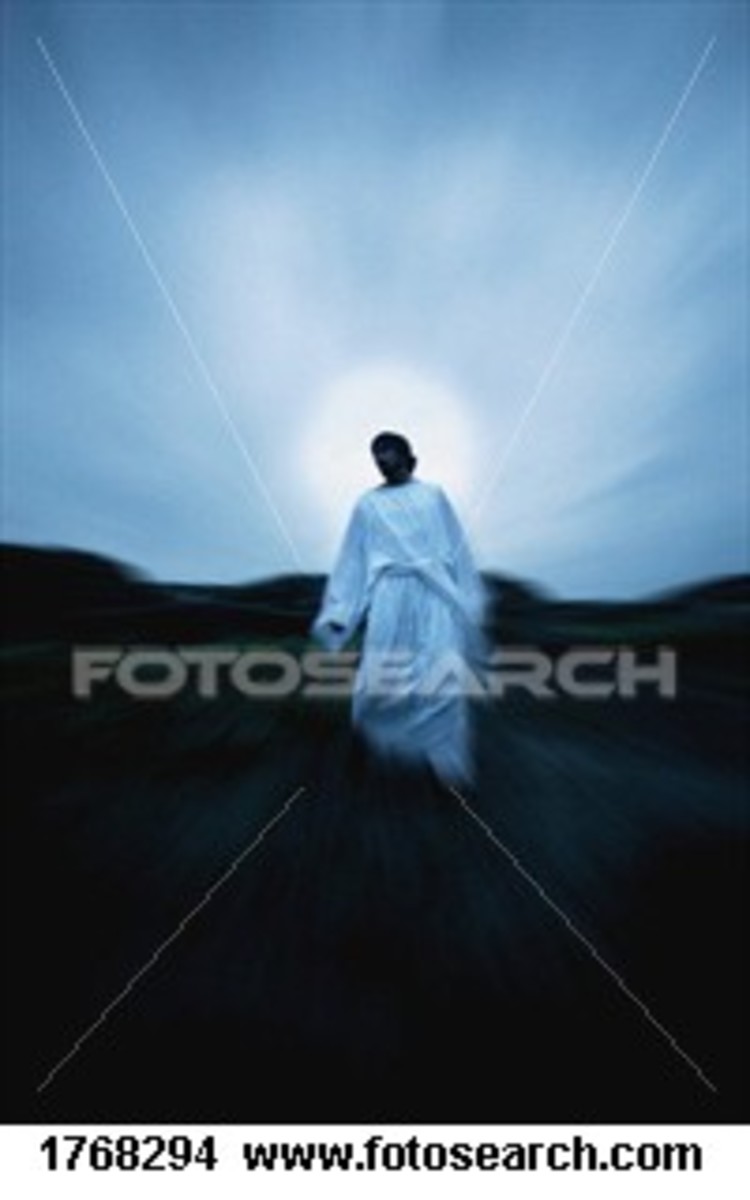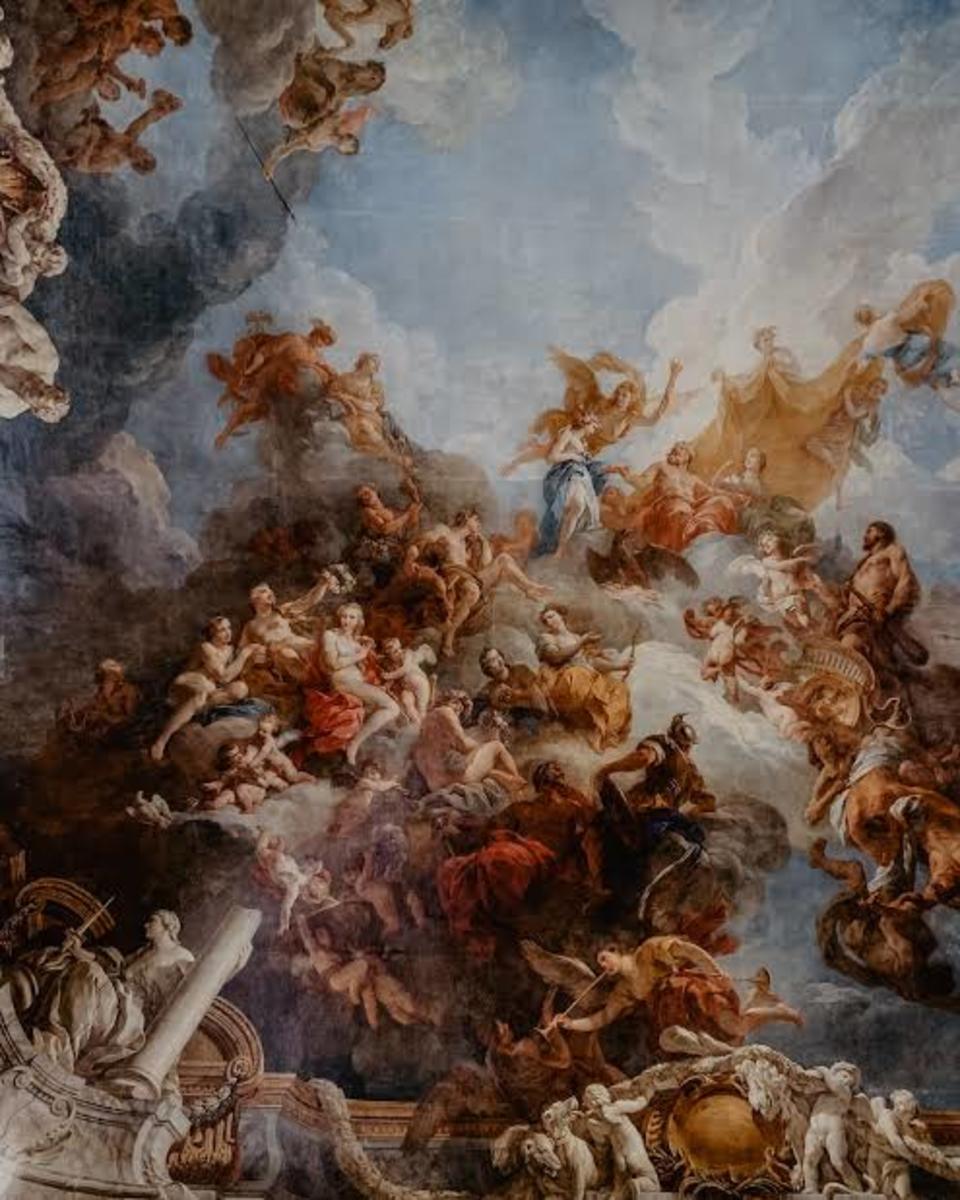HOW MANY KNOWN GOSPELS EXIST? -Part 1, Second Edition.
INTRODUCTION.
Following nigh on two years of intensive research and translation, working on a fresh and integrated version of the Gospel, this Hub has now undergone extensive revision.
Gospel; good-spell, as in spelling out the good news of the evangelist. From Greek comes the term evangelion; good message. Contemporary Christianity subscribes to the notion that a Gospel is an account of the ministry and resurrection of Christ Jesus (real name; Ha-Moshiach Yeshua). Christianity narrowly defines the Gospel as tetra-evangelion; Canon. However, in early Christianity, the Muratorian Fragment defined a Gospel thus:
...by One Sovereign Spirit, all things have been declared in all, concerning the nativity, concerning the passion, concerning the resurrection, concerning life with his disciples, and concerning his twofold coming; the first in lowliness when he was despised, which has taken place, the second glorious in royal power, which is still in the future.
Academics understand that there were more than four Gospels written. There are other scriptures, works that testify of the Messiah to come, one that speaks exclusively of events pertaining to his birth, others that vary greatly from the Canon.
THE GOSPEL OF JOHN
Introduction.
Numerous fragments of this unique Gospel, as well as the more significant P66 and P75 papyri, exist in Greek from around AD 200. There is a good correlation between what little there is of the early preserved texts and those produced shortly thereafter, although two significant events (John 6:4, 7:53-8:11) have been added to later, full manuscripts (https://en.wikipedia.org/wiki/Minuscule_472). Although no modern Christian would question whether this is a Gospel, it is the oddball of the New Testament Canon. It stands alone in style and content, being critically the most gnostic work of any bible, and contains a cryptic message at the end. According to Bart Ehrman, it was known by the early church as "the spiritual Gospel". This Gospel, as it is known today, was written entirely in Greek. One interesting feature of the work is the allusion to Simon Peter's death as a finale. This clue, consistent with other hidden facets, means it was written in a form not incorporating chapter 21, earlier than around 65AD, the traditional period of Peter's execution, and before the fall of the Second Temple/Jerusalem. Sadly we cannot hope to understand this Gospel in particular without simultaneously considering significant post-Gospel events shaping Christianity.
The Muratorian Fragment is testimony to the Apostle John being instrumental in its development. Yet significant controversy exists regarding the authorship of even this Gospel. The Apostle John is highly relevant to Christianity, being accredited with five New Testament works. However, the style of this Gospel seems to refer to the apostle, John, in the third person, and as the one whom Jesus loved. This is at odds with the account given whereby a close disciple was given revelation that he should write all things in his own name (cf. 1John1:1-3). After a full examination of the text, and related works, it appears that John was certainly instrumental in forming this Gospel, but it has since gone through some unfortunate alterations, not counting the second edition format. The second edition may have been through the wisdom of a disciple of John (Andrew). That same disciple, or those disciples and bishops, may have taken it from the Hebrew, that was John's first language, into a quality Greek format. Karaite scholar Nehemia Gordon, through one particular analysis of Revelation, has stated that there is evidence for a Hebrew composition of that work, which many scholars attribute to John.
This Gospel was originally in a chronological format, and details the relevant Festivals Of Jehovah (YHWH). Christ Jesus stars as the Lamb Of God, the Designated Son, and Will Of God. The Gospel assumes a knowledge of Torah, Temple, and Israelite culture that has been relatively recently undergoing a renaissance. What may be deemed Jesus' "mortal" ministry begins not long before the Passover, precisely 483 (69x7) years after King Artaxerxes I of Persia decrees Jerusalem be rebuilt (Ezra 7:1-22). His ministry ends at the time of Passover Sacrifice, 70 weeks later (Dan.9:24), but is counted until the subsequent Pentecost according to The Acts, by Luke. This Gospel ties in with key events in Matthew, Mark, Luke, but presents additional evidence to help reconcile history. The emphasis is on Christ Jesus as The Son Of God; The Tzemach (Isa. 4:2) who washes clean, who speaks judgement, and redemption as by the prior (Dan. 9:27) method of offering korban [sacrifices] (Isa. 4:4). Only by taking all these factors into consideration may the Gospel be understood, and redacted back to the fundamental components of the early editions.
A relatively significant portion of this Gospel deals with the issue of baptism, without giving an answer to the question. This is a conventional gnostic approach to matters, and liken to the Gospel of Thomas. For an examination of that particular issue, see my August 2016 hub; Why Baptism? - http://hubpages.com/religion-philosophy/WHY-BAPTISM . There appears to be a link here regarding the theology of John and that of Revelation, a thread of evidence that the original authors were in fact one in the same.
In Support Of A Messianical Ministry Commencing Around 26AD.
The greatest clue we have to determining the true commencement of the Messiah's ministry occurs in John 2:20. Someone is recorded as telling Christ Jesus, rhetorically, their Temple has been undergoing repairs for 46 years. This work proceeded until around 63 AD. In Josephus' "Antiquities..", Volume 15, the Temple rebuild period under consideration by the Pharisee leadership began (19 BC). In fact there is no other possible rebuild period that could even be considered. The Pharisees cannot reconcile the Messiah's words, knowing the other miracle recorded by Josephus. For rain only falls at night in Jerusalem during the Herodian Temple rebuild. A sign that Yah blesses their endeavours, despite corruption. Critical scholars are again weary of Eusebius for possible additions to "Antiquities.." such as "Testimonium Flavianium" (Volume 18), which may have originally been a more Talmud styled reference to the crucifixion accounts. Yet Eusebius, and all those who follow him to this day have traditionally avoided drawing attention to this passage of John, and all related matters.
From John 2:20, the commencement of Jesus' ministry appears to be around 27AD. The problem is that the time this conversation took place was during the second week of the first month of the Israelite year. Therefore this should be early 28AD. Then there is a serious issue regarding the chronology clash with all the synoptic Gospels. In consideration of what took place in this Passover event, it is implausible that Jesus could have gotten away with doing this at the commencement of his ministry. He would have been a marked man from the very beginning. Even with John he is recorded as attending the following Festival, Pentecost, with no initial animosity. Instead, several months later, the Winter Festival is when people are preparing to stone him. Prior to that he travelled incognito to Sukkot in Jerusalem, and yet the guard would not lay hands on him (John 7:44-46).
Strength & Authenticity.
There is a consensus amongst scholars that additions have clearly been made throughout the work. Nonetheless it is quite indispensable, being from a source clearly largely independent of the other canonical Gospels.
To avoid gross contradictions the first, key message may be rendered:
'In the beginning (Gen. 1:1) was the word, and the word was with God (Elohim), and the word was a divine being (angel/elohim-Gal.4:14). This is the one who was in the beginning with God (Prov. 8:22,29, Mic.5:2). Through him everything [with purpose] came into being and without him nothing that exists came into being [with purpose].' - John 1:1-3.
The second key message relates to the first, but incorporates the fulfillment of a Festival which is not from the Torah. All background material to the Festival Of Hanukkah has been removed from Protestant bibles. What is most relevant can be summarised hence. Following the Maccabean cleansing of the Second Temple there were stones in the Holy Place that had been defiled by the unclean, abominable ceremonies of the Greeks. A group of warriors and priests were uncertain what to do, for sacred parts of the Temple could not be rendered clean again. Yet they were once sacred objects, witnesses to cleansing ordinances. They deliberated, and considered a rubble memorial would be appropriate to mark the shame. Someone declared they should be piled at some point, perhaps around the entrance to the Temple, at any rate in an unclean place, and the Messiah shall declare what to do with them when he does come (2Macc. 4:41-46).
When the Messiah declared his existence to predate Abraham he was, in a certain way, equating himself with God. Furthermore on the second Hannukah [stoning] incident (John 10:33), Christ Jesus declared himself to be as one with God (John 10:30). To this day many Orthodox Jews subscribe to the notion that there was no pre-mortal existence for any man. They react, and technically they are correct, to Trinitarian notions that dominate Christianity. The text may be rendered:
'Jesus said to them, let it be [amen]; I say to you, I [am], ere Abram came into being, . Then they lifted stones to cast upon him, yet Jesus was hidden [from their eyes], coming out from the sacred place through their [very] midst, thus bypassing them.' - John 8:58-59.
The term "I am" may well have been stated "Anoki.." (Ex. 20:2). It is also important to note that Christ Jesus' words are the first recorded examples of any Hebrew saying amen as a prefix. It simply defies all convention.
From the second comes, essentially, the third key message; the 7 declarations of divinity:
"I am the bread of life." (John 6:35).
"I am the light of the world." (John 8:12).
"I am the gate." (John 10:7,9).
"I am the good shepherd." (John 10:11).
"I am the resurrection and the life." (John 11:25).
"I am the way and the truth and the life." (John 14:6).
"I am the true vine and my Father is the vinedresser." (John 15:1).
Nehemia Gordon, on Michael Rood's Shabbat Night Live, 13 October, 2017, 40m0s-53m17s, has identified John 17:1-26 as being originally of a Hebrew composition which has been translated to Greek, with no doubt. The repetition of, “...you gave...” , “...to love...” , “...Father...” , vis-a-vis Jehovah, is a literal manifesting of Ha-Shem through a standard Hebrew literary technique, a form of pun, in standard Second Temple vocabulary.
Conclusions On The Greatest Secret Of John.
One of the greatest enigmas in the Torah is the identity of Melchizedek (Gen. 14:18). This secret is revealed by Christ Jesus in the aforementioned incident, a jihad with the Prushim chiefs at the Temple. It is difficult to draw too many conclusions over exactly what was said, for the intricacies of a Greek text render it impossible to translate this passage back into Hebrew. Yet it is clear that the Messiah declared himself eternal, and a witness to Abram, who rejoiced to know salvation would deliver his seed (Gen. 17:6) in the presence of Christ Jesus (John 8:56-58). The matter of Melchizedek not being human is strongly supported by 11Q13/11QMelch. Then is this the same angel whose name has been corrupted, in Daniel, to Michael (Dan. 10:13,21, 12:1)? It may be conjectured that some post-exile scribe got confused with one of the three angels who visited Abraham in a later incident.
The "Fatal Error".
The most radical proponent in the genres of Hebrew Roots and Messianic Judaism today is the American born Michael Rood. In "The Chronological Gospels, The Life and Seventy Week Ministry of the Messiah" (Introduction) Rood draws attention to the dual legacy of Emperor Constantine and his enigmatic associate/biographer Eusebius. Rood points the finger at Eusebius for inventing the three and a half year ministry heresy that is presented by mainstream Christendom. Nonetheless, there is strong supporting evidence that it was in fact Emperor Constantine who forced Eusebius to "reconsider" certain narratives. He correctly argues that if the text of John 6:4 is not a forgery, then John is a witness against Christ Jesus as the Messiah. For the Messiah would have to attend Passover at Jerusalem. Then the Gospels are silent in regard to the ministry for approximately one year. This is the issue no Christian can afford to ignore. Although Eusebius may not have been the first to advocate a three year ministry, in fact he is recorded as having given somewhat conflicting testimony on this matter, he was certainly an influential figure in this formative period.
Scholar Bart Ehrman Speaks On John's Gospel
Micah5 & The Question Of Pre-existence.
Reconciling Eusebius With The Real Constantine, aka Pontifus Maximus.
IS JOHN AN ISRAELITE, JEWISH OR GREEK GOSPEL?
The question as to whether John presents an Israelite or Torah perspective gospel can only be answered after close examination of key concepts. This is quite different to a Gospel, the most notable being Matthew, which is rich in exoteric commentary on the validity of Moses' Law, and esoteric Hebraisms, when considered in Greek or English
The critical incident occurs during the midst of this Gospel, and during the middle period of Hannukah (John 10:22). The Messiah reveals the allegory of sheep and shepherd. He makes the declaration he is the Bab or Gate ([to God] Gen. 10:10) of the sheepfold. Then he declares he is the good/eminent shepherd. The third and fourth declarations come back to back. The gate or door is actually hearkening to the 613 Commandments Of Moses and Torah Of Instruction, even to the Prophets (Matt. 17:3, Mark 9:4, Luke 9:30). The Greek forms a pun, thorah, to the allegorical gate; shaar (Deut. 6:9, 11:20), or daltotay (Prov. 8:34). Israel was promised a personal relationship with God at Mt. Sinai, and many rejected this covenant. God called again through the Messiah, 'return to my Torah'. God initially asked Israel with power, 'follow my way'. God then asked of all nations in Messianic meekness, 'follow my way'. This is the most solid connection to the Israelite scriptures. A less compelling case can be made for the Greek word translated as sin in John 8:46. This is used identically in Greek Matthew, and corresponds with the Hebrew equivalent; chata, as in Matt. 3:6 (Heb.). The Greek word is from an older form that means, literally, to miss the mark. The Hebrew is equivalent by meaning in this context.
The festival of Hannukah has been examined earlier. As noted, this is not a Torah festival, but a thoroughly Jewish festival. Judaism is the religion that arose through the actions of the Prophet Jeremiah, then the subsequent philosophy of Ezra, and his supporters, as they usurped power. Judaism in Jerusalem was governed primarily by the Tsadekites and Rabbinaites. The fact that the Messiah was in Jerusalem at the Temple, according to John, means he was observing the ways of the contemporary Judaism of his era. This is a thoroughly remarkable fact given that Christianity has no known recorded history of having observed this Festival, although it is not part of the Law (of Moses), which they rapidly grew to detest within a couple of centuries (Letter Of Peter To James 2:2-7). Where Mosaic festivals occur, the technically erroneous Gospel comment; "a Festival of the Jews" (KJV) frequently appears. The Tsadekites and their Karaite successors were thoroughly Torah oriented and had little time for Rabbinical doctrine. The Messiah was consistently recorded insulting and challenging the Rabbinaites, and emphasising Torah with a non-orthodox interpretation. The Hannukah matter seems almost counter-intuitive in this regard; a contradiction.
This Gospel certainly contains Hebraisms according to this N. Gordon, and, independently, this author. There is possibly one example of Hebrew syntax elsewhere too. Here I must point out a problem I encountered when comparing the accounts common to John with those in the Qur'an and Egerton 2. The problem exists with the phasing of the accounts. Certainly they have portions which overlap nicely, much like the Synoptics, but conversely they will be somewhat different in language and sequence, being very tricky to combine. There is one known record of church fathers referring to this Gospel arising in the Hebrew language and alphabet. This occurs in Panarion 30.3.8-9, by Epiphanius. The Acts and John, both in Hebrew, were said to exist at that time in Tiberias, being a powerful tool in converting Jews to The Way. The origin of the Jochanine Gospel is primarily attributed to the general area of Ephesus. Linguistically, this is a Greek Gospel in its present form. Another issue is the way in which the term Jew is used as a contrast to those following Jesus. The matter suggests that this manner of editing occurred at a time after the destruction of Jerusalem.
CONCLUSIONS FROM JOHN & HOW IT MEASURES UP AS A GOSPEL
This Gospel is essentially independent of any in the Canon. Where it does overlap with other Gospels, these matters provide critical reference points to harmonisation. This is a thoroughly Greek Gospel in terms of language, yet it contains pro-Torah concepts and Maccabean-era Judaism as Gospel. These truths are remarkable in a world where religious divides run deep in all camps.
Despite being tampered with, it is a solid testimony to the purpose of the Mosaic calendar, which governed key events in the Messianic ministry of the son of Mary.
THE EGERTON GOSPEL aka EGERTON PAPYRUS 2
"Now that many have put their hands to the composition of a narrative regarding the events that have certainly taken place among us..." (Luke 1:1).
This is one of the earliest New Testament papayri finds and is a unique example of an unknown Gospel codex in the type of the canonical Gospels. Apparently it is a Greek document acquired by the British Library from Egypt. What little remains of this work displays a literary quality that is richer and more profound than any comparative text. The first story has the greatest similarities to John (5:39-47, 10:39) and finishes with an account of an otherwise unknown miracle beside the Jordan that is based upon a Psalm and Ezekiel. The unique Jordan event may be part of the two month Winter component of the Messiah's ministry when virtually nothing is recorded in any Gospel other than Luke's (Luke 11:1-17:10). Elements of the other two events could have come from the synoptic sources, although the leper incident is similar to Luke 17:11-14. Yet the third key portion is another game changer, if indeed it came from the final Temple discourses and merely reiterates earlier rhetoric. If the connections to Isaiah are taken all the way then this matter has highly significant ramifications to understanding Islamic theology (The Partially Restored, Sequential Gospel Of The Messiah - unpublished). During the early second century it is known that Gospel and other New Testament works like Luke and John were often found together as teaching material, long before the first bible was compiled. It cannot be certain whether it is a fully independent Gospel or simply a collection of traditional stories, it is recognised as being a very early work dating before the end of the second century. It may be a witness to that which the author of Luke attested.
OXYRHYNCHUS GOSPELS 210, 840, 1224.
The Oxyrhynchus site of discarded manuscripts in Egypt yielded many ancient documents, such as a copy of the Gospel Of Thomas and including some tantalising fragments of early christian works. The Gospel fragments discovered provide some further evidence of alternative Gospel accounts.
P. Oxy. 210 is a Greek fragment of a text related to Matt. 7:17-19 and Luke 6:43-44 and dated to the third century.
840 is another Greek codex fragment that gives a new account of an incident at Herod's Temple between Jesus, his disciples and a chief priest. Jesus is called saviour which is most unusual in Gospels. The start of the fragment speaks of a sinner who focuses his plans on his present existence and not the afterlife. Researchers date this gospel fragment to the fourth century. Sadly the content was deemed not a match for the standard of the canon, nor the better pseudepigraphal works. This perspective has been challenged by Craig A. Evans of Acadia Divinity College, Canada.
1224 consists of two fragments dated around the turn of the third century, although possibly much earlier. There is little surviving text to work from. Opinions are divided over what this find amounts to but there are parallels between Mark 2:17 and Luke 9:50. The text is a slightly enriched version of the synoptic accounts.
THE GOSPEL OF JUDAS
What many people do not know is that the Gospel Of Judas is one of the earliest, near complete Gospel manuscripts in existence. It was carbon dated to a mean estimate of 280AD, but was in the company of another manuscript known to have been written as late as 308AD. The ink used was identified as being from the 3rd century AD (p.76-77, Stanley E. Porter and Gordon L. Heath, The Lost Gospel of Judas, Grand Rapids, Library Of Congress, 2007). It is suspected that this Coptic language Gospel may be a form or copy of an earlier Greek manuscript. Certainly at least one work known as the Gospel Of Judas was known to the early church father Irenaeus. Pagels & King incline towards a composition date of around 150AD (xiii, Elaine Pagels and Karen L. King, The Controversial Message of the Ancient Gospel of Judas, London, Penguin, 2007) , mainly on Irenaeus' testimony. The author is anonymous.
The Gospel allegedly begins with the word Logos, around the 62nd week of Jesus' ministry, and runs 8 days, until 3 days before the final, legal Passover. The way the first verse is written suggests the account is fictional, for Jesus never observed a final Passover, being sentenced to execution by crucifixion on the morning before Passover. During this period there is no reference to Judas Iscariot in other Gospels. Jesus' location is often around Bethany during this period (Matt. 21,26, Mark 11,14, Luke 19, John 11,12). This is no traditional Gospel ministry account. It reads like a short story of hidden messages. In stark contrast to Christianity it begins with a message that Jesus came to rescue those who fell into transgression, although many walked in righteousness. Christianity maintains that only those who follow Jesus, alone, can be saved. A message inconsistent with the Messianic Hebrews (Heb. 9:22) that suggests degrees (Heb. 9:14) of salvation are necessary for atonement is not exclusively by blood. Conversely, Pagels & King draw parallels between John 3:17-18, a text that is akin to the preceeding message. The only direct reference to the Old Testament seems to be found in Judas 2:16. "Let whoever is [strong] amongst you humans bring forth the perfect human..." (Ps.37:37).
Key Gnosis
Early on, Judas highlights the reality that Christ Jesus is not quite human. They describe him as the Son Of God (Jud. 2:9) but he rejects their having any understanding of the term. He declares there are races of beings superior (Jud.2:11) to the sons of Adam. Only Judas understands clearly the superiority of the Messiah, and speaks of his home as being with the mysterious gnostic Barbelo concept, having some connection to Melchizedek in other Nag Hammadi writings. In the succeeding chapter, Christ Jesus speaks of his visitation to a superior race of beings, but the disciples question how there could be any such thing in the vicinity. Sadly the text is damaged before there is further clarification. Then visions are declared by the disciples, but when Christ Jesus interprets them they are dismayed. They see their own vices and errors, suffering masses who trusted in them. Judas sees his own coming persecution and a sanctuary, but Christ Jesus tells him this place is off limits to any mortal son of Adam (Jud. 9:17) at this time. The Cloud Of God, identified as a luminous cloud in the text, appears. Then a significant portion of text goes into peculiar gnostic theology. The ending is brief, but consistent with the Canon. Judas reveals information to the chief priests about the Messiah's whereabouts and is paid in copper coins.
Conclusions.
Pagels & King make a fairly convincing case through other evidence that this Gospel is retrospective and not the work of any insider. Some of the gnostic concepts are clearly of a pagan persuasion, but at a deeper level are highly influenced by Jewish/Israelite tradition. The notions of superior humanoids is particularly reminiscent of certain Islamic teachings, some hundreds of years later, extrapolating on Qur'anic events: https://sayyidamiruddin.com/2013/06/06/alien-civilizations-the-holy-prophet-s-on-the-night-of-al-isra-wal-miraj/ (Please note the defect in the search engine which suggests a missing link. Bypass the defect by going to the worldpress.com website, find Sayyid A. Amiruddin, and go to his postings for June 2013; https://sayyidamiruddin.com/2013/06/ .) It also appears to be an expansion on the concepts of the books of 1/2Enoch that underlie the biblical text in Genesis and Jude. The author is clearly well versed with the more conventional Gospels of the canon but follows a totally different path to deliver an alternative message. He leaves a couple of key threads of evidence that betray the retrospective aspect, such as the chronological timeframe (Jud. 1:1). Despite the confusing polytheistic aspects of the gnostic message, there is still a clear God of supremacy and associated signs. The Cloud (Jud. 10:7) is indicative of either personal, or second-hand, knowledge of a supernatural, revelatory appearance. Pagels & King agree the terms, decay, translations and possible textual modifications make this a difficult scripture to interpret. Porter & Heath (2007) make a standard type of argument against the value of Judas to New Testament studies. They describe it as typical gnostic "rehabilitation literature" and dismiss Judas Iscariot as the evil betrayer of mainstream Christianity fame. Surely the value of Judas is mostly in its presentation of a richer cosmic understanding that mainstream nicolatian driven religion sought to eliminate. The message that Judas Iscariot was the insider is valid, and somewhat consistent with the Gospel Of John.
From a personal perspective, I have come to view this Gospel message as being an indictment on Christianity, with prophetic aspects. The writer presents a vision known to Jesus from the outset, and shared with Judas, of followers who fall way short of the mark in their behaviour, and adherence, to the way of their founder.
The Most Famous Kiss.
